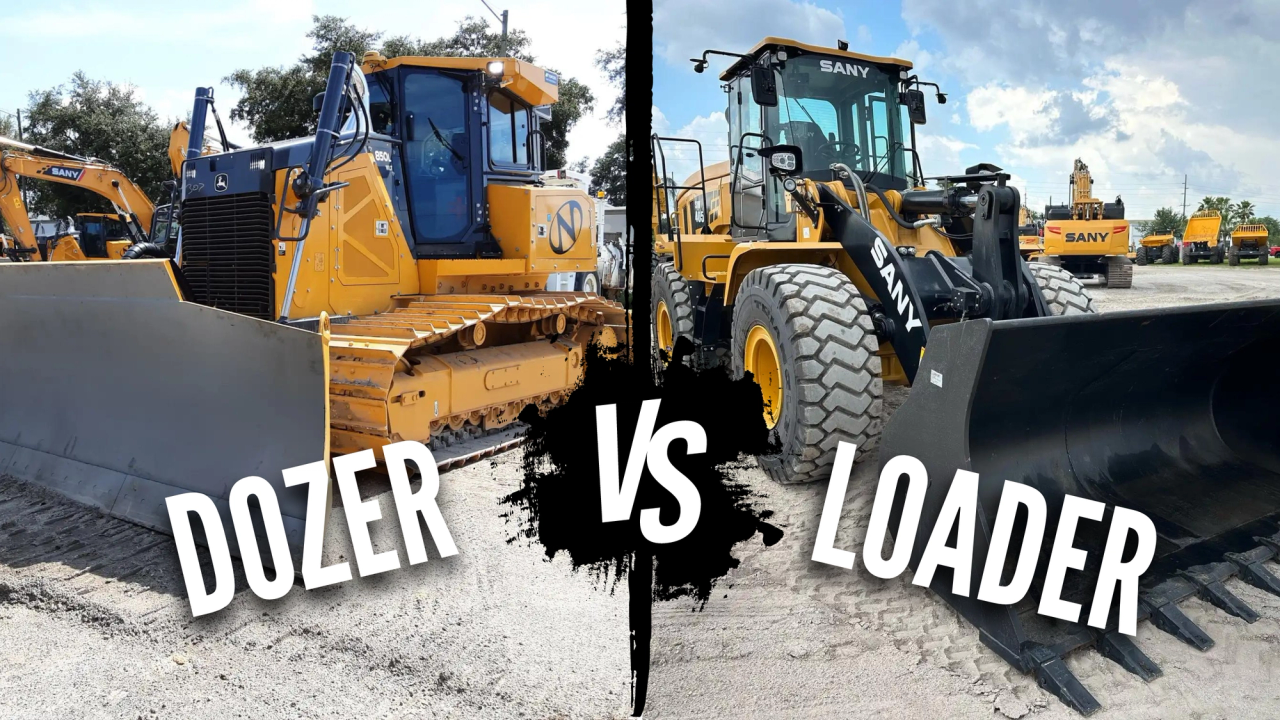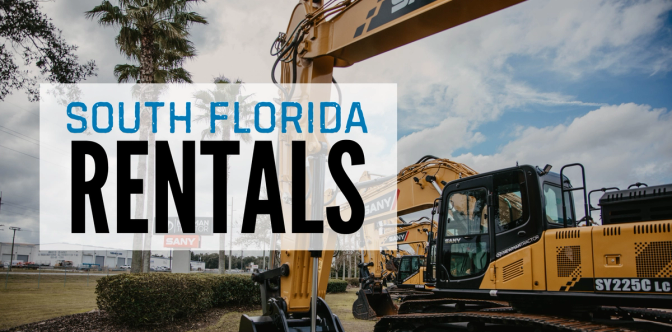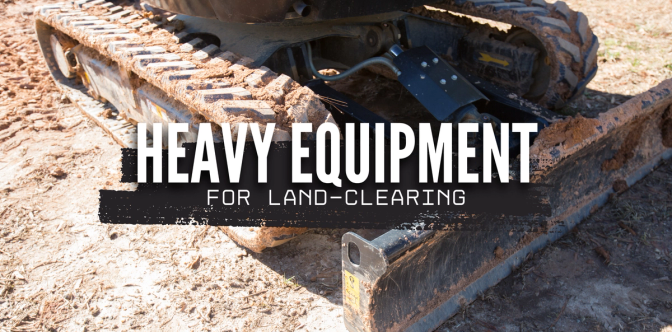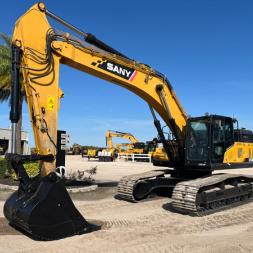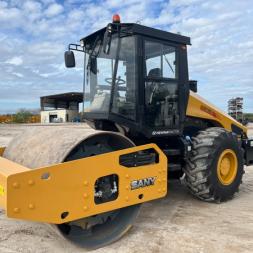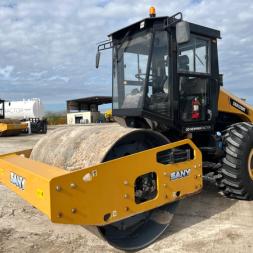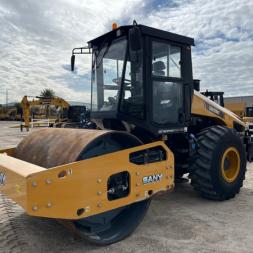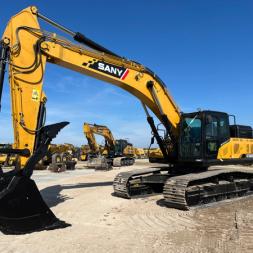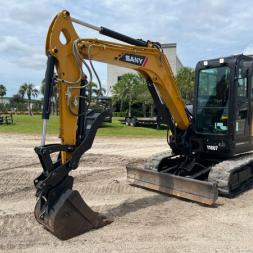Overview of Bulldozers
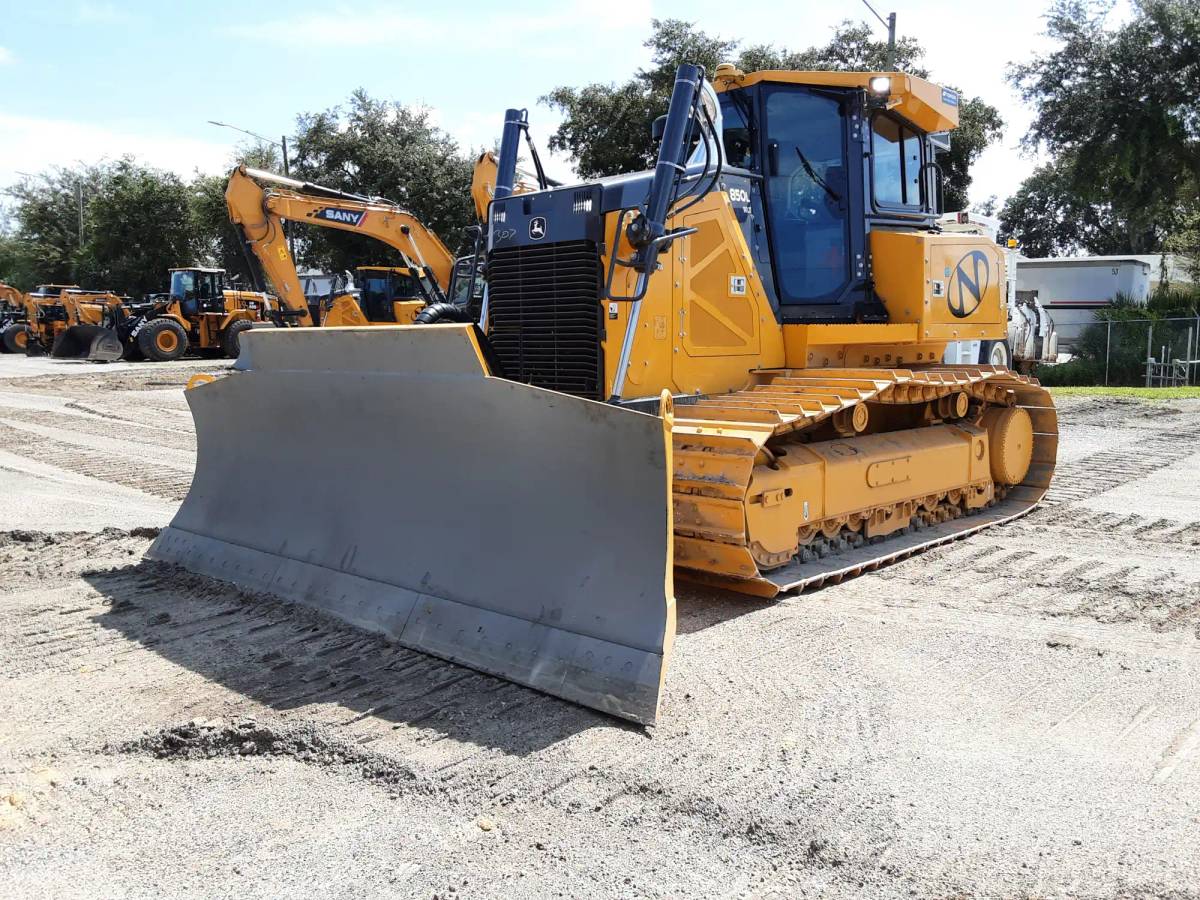
Common Bulldozer Uses
- Construction: Clear and grade land and remove debris.
- Mining: Move large quantities of overburden (the top layer of soil) and minerals.
- Agriculture: Land clearing and preparation.
- Military: Build roads and airfields and remove obstacles in combat zones.
- Waste Management: Spread, compact, and cover landfill waste to manage space and control pests.
- Landscaping: Shape land, move soil, and clear brush for large-scale landscaping projects.
- Demolition: Knock down structures and clear debris in demolition projects.
Bulldozer Advantages
- Ideal for moving large volumes of earth or debris over short and long distances.
- Built to withstand harsh environments and heavy-duty tasks.
- The tracked design allows dozers to perform well on rugged terrains where wheeled vehicles might struggle.
- With attachments like rippers for breaking up hard earth or rock layers, bulldozers can handle various jobs beyond simple pushing and leveling.
Overview of Front-End Loaders
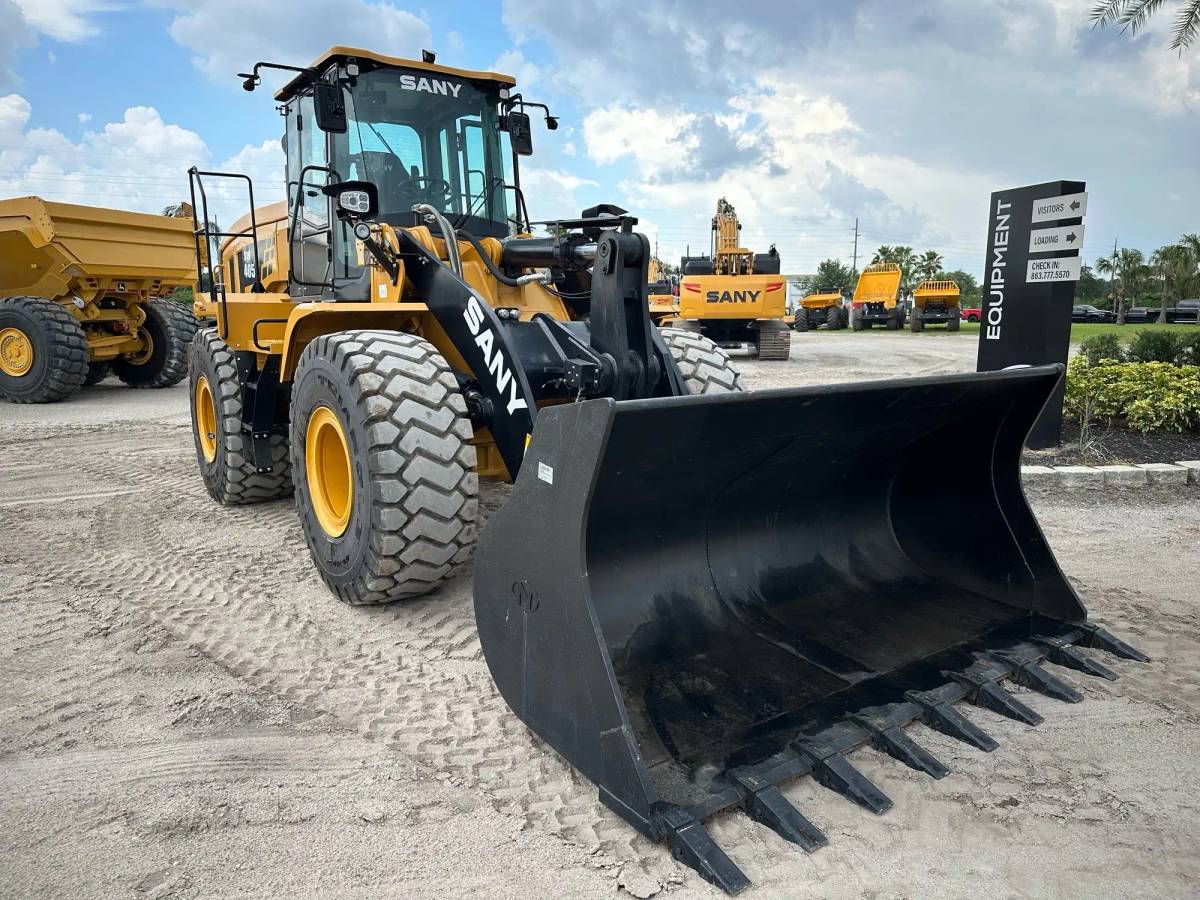
Common Front-End Loader Uses
- Construction: Transport building materials, clear sites, and load trucks.
- Landscaping: Move large amounts of soil, sand, or gravel, and grade land.
- Agriculture: Handling bulk materials like feed and manure and harvesting crops.
- Snow Removal: Their ability to push and lift makes them excellent for clearing snow from roads and parking lots.
- Forestry and Logging: Move logs and clear debris in forestry operations.
- Material Handling: Transport and organize bulk materials across various industries.
- Waste Management: Move, compact, and load waste at disposal sites.
- Demolition: Remove debris and load trucks during and after demolition projects.
Front-End Loader Advantages
- Models with wheels can move quickly around a site, making them ideal for projects with space constraints.
- Capable of being fitted with various attachments such as forks for pallet handling, grapples for debris, or snow plows, enhancing their functionality.
- They can handle significant weights, useful for loading and transporting heavy materials.
- The front-mounted bucket and the machine’s design improve operators' visibility, improving safety and efficiency on the job site.
Comparative Analysis
Size, Mobility, and Versatility
Operating Costs
- Due to their size and heavy tasks, dozers typically consume more fuel than front-end loaders. Maintenance can also be more demanding due to the complexity of their undercarriage and the wear they experience on their tracks.
- Front-end loaders may have lower fuel consumption and maintenance operating costs, but they typically require a larger upfront investment. Their wheel systems are generally simpler to maintain than bulldozer tracks and tend to be more fuel-efficient.
Attachment Options
- Bulldozers can use various blades (straight, U-shaped, or angle blades) and rippers, which are used for penetrating tough earth or rock.
- Front-end loaders have a broader range of attachments, such as different types of buckets, forks, and brooms, making them highly adaptable to many tasks.
Factors to Consider When Choosing Between the Two
Project Requirements
- Bulldozers are ideal for moving large volumes of heavier materials like soil, sand, and rubble over relatively flat or rough terrain. A loader is usually more suitable if the project involves lighter materials or requires precise placement.
- The nature of the terrain is critical. Dozers perform excellently on rough, uneven terrain due to their tracks, making them stable in such conditions. Front-end loaders, particularly wheeled versions, are better suited for smoother, firmer surfaces where maneuverability and speed are beneficial.
- Larger projects that require extensive earthmoving or grading might benefit more from a bulldozer's capabilities, while smaller or more detailed projects could take advantage of a loader's versatility and agility.
Budget Constraints
- Consider fuel efficiency and maintenance costs. Loaders tend to be more fuel-efficient and cheaper to maintain than dozers, which could significantly affect long-term project costs.
- Depending on the duration and frequency of use, renting might be more cost-effective, especially for expensive bulldozers, unless you’ll be using it regularly. Keep in mind that rental rates on loaders will be higher than the rates on dozers.
Availability and Accessibility
- Check the availability of each type of equipment in your area. Sometimes, the choice might be influenced simply by what’s locally available for rent or sale.
- Consider the ease of transporting the equipment to the site. Being larger and heavier, the machine might require more complex logistics and higher transportation costs than the other.
| Factors to Consider | Bulldozers | Front-End Loaders |
|---|---|---|
| Project Requirements | Ideal for moving large volumes of heavier materials like soil, sand, and rubble over rough terrain. | Suitable for lighter materials or projects requiring precise placement on smoother surfaces. |
| Terrain | Excellent on rough, uneven terrain due to their tracks, providing stability in challenging conditions. | Better suited for smoother, firmer surfaces where maneuverability and speed are beneficial. |
| Project Scale | Best for larger projects requiring extensive earthmoving or grading. | Ideal for smaller or detailed projects needing versatility and agility. |
| Budget Constraints | Higher fuel consumption and maintenance costs; consider long-term expenses. | More fuel-efficient and cheaper to maintain; potentially more cost-effective in the long run. |
